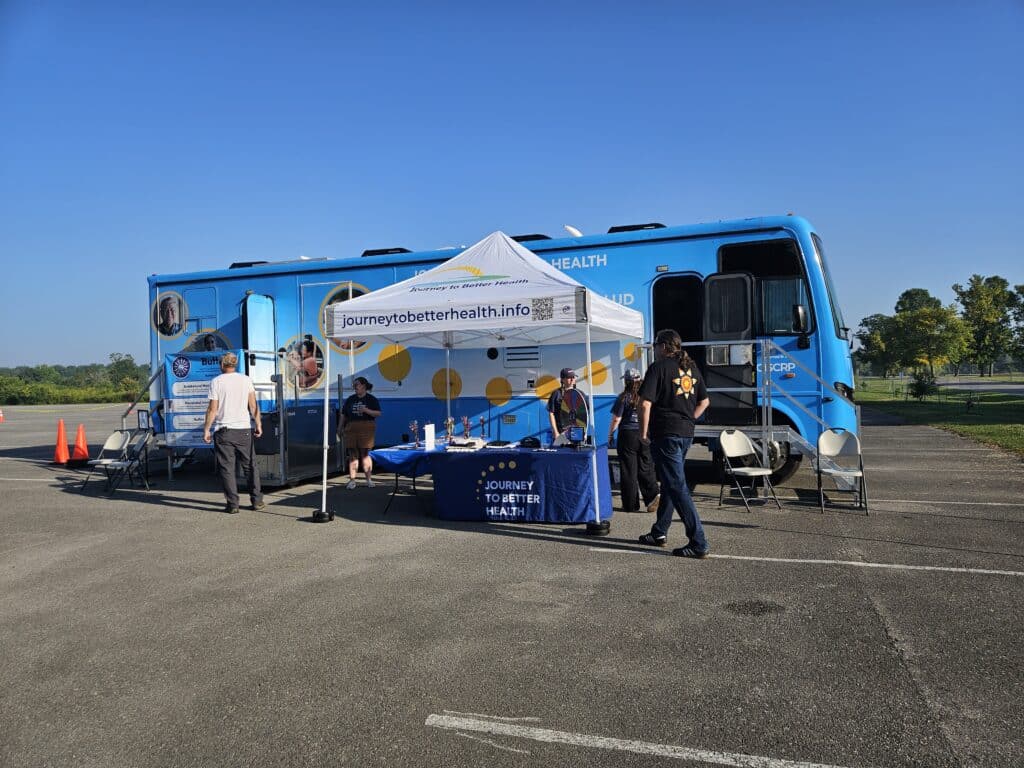An Inside Look at Advocating for Yourself or Your Child in a Clinical Trial
By paigel|Dec 13, 2021
By paigel|Dec 13, 2021

Dr. Mark Sorrentino, MD, MS, Vice President for Pediatric Development, ICON and Dr. Joanna L. Perkins, MD, MS, Director of Medical Affairs, Hematology-Oncology, Americas, ICON, discussed how to advocate for yourself or your child in a clinical trial in a CISCRP 15-minute Flash webinar. Dr. Sorrentino shared his perspective as a clinical trial participant and Dr. Perkins expanded on her experience from a principal investigator’s lens. You can view the webinar here.
It was near Thanksgiving in 2020, and Dr. Mark Sorrentino noticed a small lump in his neck which was diagnosed as head and neck cancer. “I found out I had cancer that required surgery, radiation and chemotherapy,” Dr. Sorrentino recalls. “At the time of my diagnosis, my care team told me there was a clinical trial that I could participate in. Given that I had been in clinical research for over 20 years, it was the first time I had the opportunity to participate in a clinical trial – I was both nervous and excited about seeing what it would be like from the other side.” The experience reinforced the importance of being an advocate for oneself or one’s child in Dr. Sorrentino’s mind.
Reviewing Informed Consent & Schedule of Assessments
Starting from the beginning of Dr. Sorrentino’s journey, he received an informed consent document that was 15 pages long. While it was not the longest document of this type that he had seen during his career in clinical trials, it was still somewhat daunting. Dr. Sorrentino thought about how this same document would need to be translated into an assent document for a child. (An assent form differs from an informed consent form and is designed to indicate that a child is willing to participate in a clinical study and understands what he or she will need to do. You can learn more here).
“It was filled with all sorts of legalese, and one thing that I picked out that I thought was very challenging, was the schedule of assessments,” says Dr. Sorrentino. The schedule outlines the treatment, tests and other procedures that may occur during the course of the clinical trial. The documents are not always presented in an easy-to-follow format. Because of his experience in clinical research, Dr. Sorrentino knew to ask for a version of the document that outlined the details in a table.
“Informed consent documents can be completely overwhelming,” says Dr. Joanna L. Perkins. “From a regulatory standpoint, there is a lot of information that has to be included.” And, at the beginning of the study, it’s important to find out how the results of the clinical study will be shared with participants.
It is also important to understand before deciding to participate, what is particularly being done for the trial and what is above and beyond that is specific to that clinical trial and not part of standard of care. This is not always clear for the participant and important to feel confident to ask the study team questions early on. For example, a weekly blood draw that is outlined in the schedule of assessments may feel burdensome, but it may also be part of the regular standard of care for the disease or indication.
Coordinating Care & Providing Support
“One time I went in for my standard of care blood draw, which was in one laboratory area in the hospital. Later that day, when I went to the clinic to do the schedule of assessments for the clinical trial, and I had to have another blood draw,” said Dr. Sorrentino. He asked the clinical study coordinator why a single blood draw had not been scheduled and coordinated, to save time and physical discomfort. “This was an example of the health care teams not communicating with each other,” says Dr. Sorrentino.
“Depending on the clinical trial that you are in, and the center you are at, there may be two totally different teams of medical professionals who are overseeing your clinical care and your study assessments,” says Dr. Perkins. “It’s really important to advocate for yourself or your child to make a point of understanding what is being done on each of the days you go for your visit. Painful procedures are often a part of treatment. Make a point to ask what will be done to support your child through those painful procedures – and adults, as well.” Many clinical research centers have dedicated child-life staff to ensure that pediatric participants are cared for in the most sensitive way to minimize pain and fear. This can include play-based distractions, medical procedures such as sedation, or meetings with pediatric mental health professionals.
Parents may have to coordinate childcare options for siblings, in tandem with scheduling medical treatment for the child participating in clinical research. “Most large pediatric clinical centers have sibling play areas,” adds Dr. Perkins. Other services may include programs that address how to cope when one’s brother or sister is going through treatment for a chronic illness, such as cancer. “Parents should ask about programs to support their other children,” advises Dr. Perkins. Sometimes, there is financial support available for childcare and transportation.
Coordinating visits to the clinical research center with standard of care visits, when possible, can greatly reduce the burden of clinical research participation for both adults and children. It is important to advocate for yourself and/or child when scheduling clinical trial visits with the study team. “Take a really good look at when you have to be at the clinic,” says Dr. Sorrentino.
Bringing the Clinical Trial to You
Remote capabilities are being scaled in clinical research, due, in part, to the advent of the COVID-19 pandemic. Some tests may be able to be performed at home with the use of portable medical devices and apps, coordinated through a laptop, tablet or mobile phone. Clinical research staff, including nurses, can often make home visits. Dr. Sorrentino was able to be evaluated at home, outside in his yard, during the COVID-19 restrictions in his hometown of Los Angeles. “It was fantastic, it kept me from having to go down to the hospital,” says Dr. Sorrentino. “The nurse took my vitals and did my lab work.”
Asking Questions About the Placebo
Another point of advocacy is around the use of placebos. Inquire what happens at the end of the study. If your child was on the placebo, ask if they will be able to receive the therapeutic drug or agent that was being studied at that point of time. “Many times, that is the case, but you have to remember to ask about it,” says Dr. Sorrentino.
Developing New Treatments & Optimizing Care
Overall, Dr. Sorrentino views his experience as a clinical trial participant in a positive light. “Clinical trials need you and they need your children, if we’re going to get new and innovative therapies, particularly for children, since we have lagged behind on that in the past,” says Dr. Sorrentino. It’s important to remember there is a whole team of medical people watching your disease and diagnosis.
“The overall cure rate for pediatric cancers in the 1960s was about 20%,” says Dr. Perkins. “And now, today, it’s higher than 80%. The biggest, most important reason for that is the sharing of data and participation in clinical trials. With standardized clinical trials, we can learn much more quickly how to optimize care and increase survival rates for diseases like cancer,” says Dr. Perkins.
Authored by: Melissa E. Daley, Communications & Marketing Manager, CISCRP



